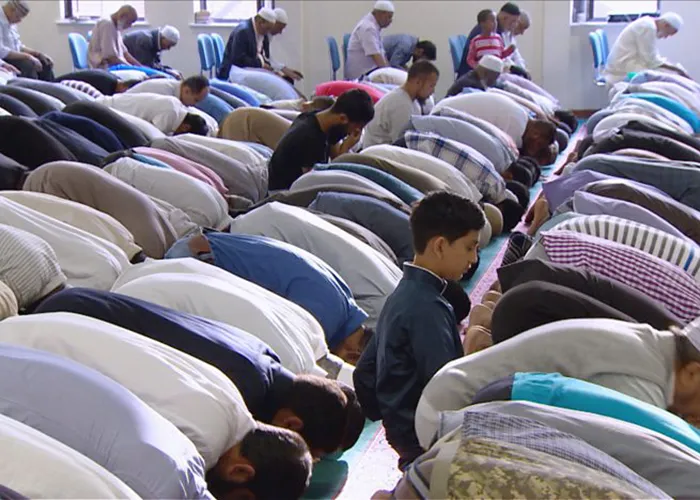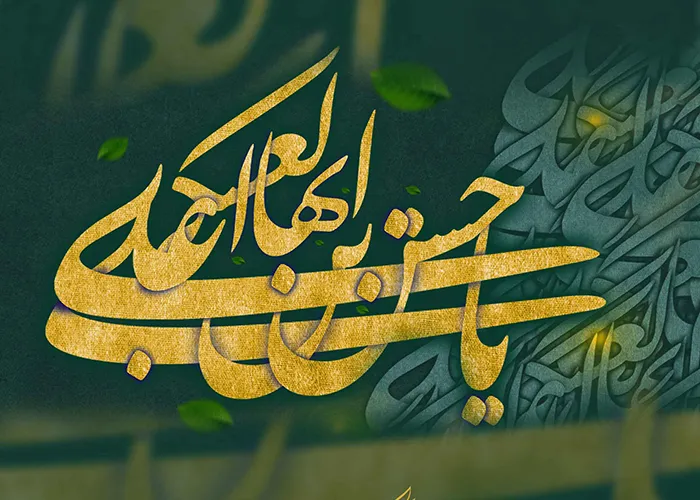Fatwa Panel of the Week – Volume02 Issue30
Rulings Related to the Clothing:
Here are the continuing rules related to the clothing, according to the fatwas of the Grand Religious Authorities:
Grand Ayatollah Khamenei, Grand Ayatollah Sistani, and Grand Ayatollah Makarem Shirazi (may their eminence be preserved)
Conditions of the clothing for the person performing prayer:
2nd Condition: The clothing of the person performing prayer must be permissible (mubāḥ)—meaning, it must not be usurped (ghasbī).
| Ayatollah Khamenei | Ayatollah Sistani | Ayatollah Makarem Shirazi |
| 1. If a person does not know that wearing usurped clothing is forbidden, their prayer is valid. However, if they know that it is forbidden—even if they do not know that it invalidates the prayer—then if they intentionally pray in usurped clothing, they must repeat the prayer in non-usurped clothing.
2. If a person is unaware or forgets that their clothing is usurped and performs the prayer in it, their prayer is valid. 3. If someone intentionally prays in clothing that contains any usurped element—such as a thread, a button, or anything else—their prayer is invalid. |
1. Usurped clothing:
If a person knowingly performs prayer in usurped clothing, the prayer is invalid (bāṭil). If a person unknowingly wears usurped clothing, the prayer is valid. If a person forgets that the clothing is usurped, the prayer is valid. 2. Partially usurped items: If a non-essential part of the clothing (e.g., a small thread, label, button) is usurped and the person intentionally wears it, it is precautionarily obligatory (iḥtiyāṭ wājib) to repeat the prayer with permissible clothing. If one is unaware or forgets about the usurped part, the prayer is valid. |
1. Usurped clothing:
Prayer in usurped clothing is invalid if done knowingly and intentionally. If the person is ignorant of the ruling or forgets the clothing is usurped, the prayer is valid. 2. Small usurped components: If only a minor part of the clothing (like a thread, button, or lining) is usurped, and the rest is permissible, then: The prayer is valid if the usurped part is not independently considered clothing and has no significant role in covering the body. If the usurped item is significant, or if praying in it is disrespectful, then it is invalid when done intentionally. |
3rd Condition: The Clothing of the Person Performing Prayer Must Not Be from a Carcass.
| 1. The clothing of the person performing prayer must not be made from parts of a dead animal (maytah) that has flowing blood (i.e., blood that spurts when the veins are cut). As an obligatory precaution (iḥtiyāṭ wājib), it should also not be made from the parts of a dead animal that does not have flowing blood.
2. If any part of a carcass is present with the person during prayer, then based on obligatory precaution, the prayer is invalid. However, if the parts are lifeless parts from a ḥalāl (permissible to eat) animal—such as hair, wool, horn, or bone—then the prayer is not invalid. 3. Leather or hides from ḥalāl animals imported from non-Muslim countries, for which the process of Islamic slaughter (tadhkiyah) is uncertain, are not considered najis (ritually impure) and are regarded as pure (ṭāhir). However, one cannot pray in them. · If someone prayed in such clothing out of ignorance of the ruling, their prayer is valid. · If the importer is a Muslim and there is a reasonable probability that they investigated the issue of tadhkiyah, then praying in such leather is not problematic. |
1.Clothing from a dead animal with flowing blood (e.g., cow, sheep):
Prayer is invalid if the clothing is made from such a carcass, regardless of whether it is najis or ṭāhir. 2.Lifeless parts (e.g., hair, wool, feathers, horn, bone) from ḥalāl animals: Valid even if the animal was not slaughtered Islamically. 3.Leather from non-Muslim countries (doubtful tadhkiyah): Considered impure (najis) and prayer in it is invalid unless you are sure it was Islamically slaughtered. If a Muslim imports it and there is a reasonable probability they verified the tadhkiyah, it is permissible to pray in. 4.Unaware of the ruling and prays in such clothing: Prayer is valid, but if they knew the ruling and ignored it, the prayer must be repeated. |
1.Clothing from a dead animal with flowing blood (maytah):
Invalid for prayer, whether the part is large or small. Even if it’s dry or doesn’t transfer impurity, it cannot be worn in prayer. 2.Lifeless parts (e.g., wool, feathers, horn, bone): Permissible in prayer, even if the animal was not slaughtered Islamically, as long as it is from a ḥalāl animal. 3.Leather from non-Muslim countries: Treated as maytah, unless proven otherwise. Cannot be used in prayer. If a Muslim sells or imports it and you reasonably assume investigation into its origin, prayer is valid. 4.Unaware of ruling and prayed in such material: · Prayer is valid and need not be repeated. |
4th Condition: The Clothing of the Person Performing Prayer Must Not Be from the Parts of a Ḥarām Animal.
| 1. The clothing of the person performing prayer must not be made from any part of a ḥarām (forbidden-to-eat) animal. Even if a single hair from such an animal is on their clothing or body, the prayer is invalid.
2. If pure moisture (such as saliva or nasal fluid) from a ḥarām animal—like a cat—is on the clothing or body of the person praying, the prayer is invalid, unless the actual substance has dried and its trace has been completely removed. 3. If human hair, sweat, saliva, beeswax, pearls, or shells are present on the body or clothing of the person praying, the prayer is unproblematic. 4. If a person is unsure whether something is from a ḥalāl animal or a ḥarām animal, the prayer is valid. |
1. Clothing from ḥarām animals (e.g., cat, dog, lion): Prayer is invalid if any part of a ḥarām animal with flowing blood (e.g., hair, skin, bones) is on the clothing or body—even a single hair. This includes both domesticated and wild animals that are ḥarām to eat.
2. Moisture (e.g., saliva or nasal fluid) from a ḥarām animal: If it renders the clothing najis (ritually impure), the prayer is invalid unless it is removed. If it is dry and does not leave visible residue, and is not considered najis, the prayer may still be valid—but precaution is advised. 3.Excrement of ḥarām birds: If it is najis, prayer is invalid. If removed after drying and no visible trace remains, prayer is valid. 4. Uncertain origin (ḥalāl or ḥarām): If the person does not know whether the hair or material is from a ḥalāl or ḥarām animal, the prayer is valid. 5. Human items, beeswax, pearls, and shells: These are permissible in prayer. |
Same as Ayatollah Khamenei’s Fatwa. |
5th Condition: The Men’s Clothing Must Not Be Made of Gold.
| 1. Wearing clothing that is woven with gold or has gold incorporated into it is forbidden for men, and prayer in such clothing is invalid. However, for women, there is no problem wearing such clothing in prayer or otherwise.
2. It is forbidden for men to use gold chains, gold rings, or gold wristwatches, even for a short period (e.g., at the moment of a marriage contract), whether or not it is for adornment, and even if it is kept hidden from others. According to obligatory precaution (iḥtiyāṭ wājib), prayer with such items is also invalid. 3. Using gold for bone surgery or dental prosthetics by men is permissible and does not invalidate the prayer. · What is referred to as white gold: If it is the same as yellow gold that has turned white due to mixing with other elements, it has the same ruling as yellow gold (i.e., forbidden for men). However, if the amount of gold is so small that it is not considered gold according to common perception, then its use is permissible for men. 4. The use of platinum is also permissible. 5. If a man does not know or forgets that his ring or clothing is made of gold and prays while wearing it, his prayer is valid. |
Same as Ayatollah Khamenei’s Fatwa. | Same as Ayatollah
Khamenei’s Fatwa. |
6th Condition: The Men’s Clothing Must Not Be Made of Pure Silk.
| 1. If a man wears clothing made of pure silk, even items that do not cover the private parts (such as a skullcap, socks, etc.), his prayer is invalid, and it is also forbidden for him to wear such clothing outside of prayer as well. However, if something like a silk handkerchief is carried with him (e.g., in his pocket), it is permissible and does not invalidate the prayer.
2. If the lining (āstar) of a garment—even part of it—is made from pure silk, then wearing it is forbidden for men, and prayer in it is invalid. 3. Wearing a garment when one is uncertain whether it is made of pure silk or something else is permissible, and prayer in it is valid. 4. For women, wearing pure silk—whether in prayer or outside of it—is permissible and unproblematic. |
Same as Ayatollah Khamenei’s Fatwa. | Same as Ayatollah Khamenei’s Fatwa.
Note: In point 2, He says: Haram & invalid (if significant) |
editor's pick
news via inbox
Subscribe to the newsletter.




